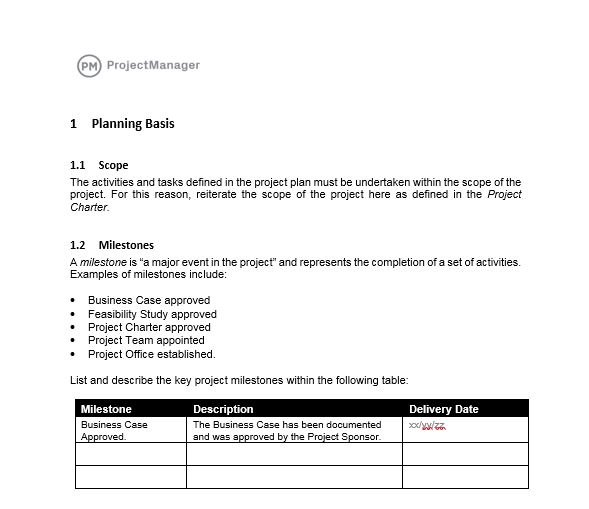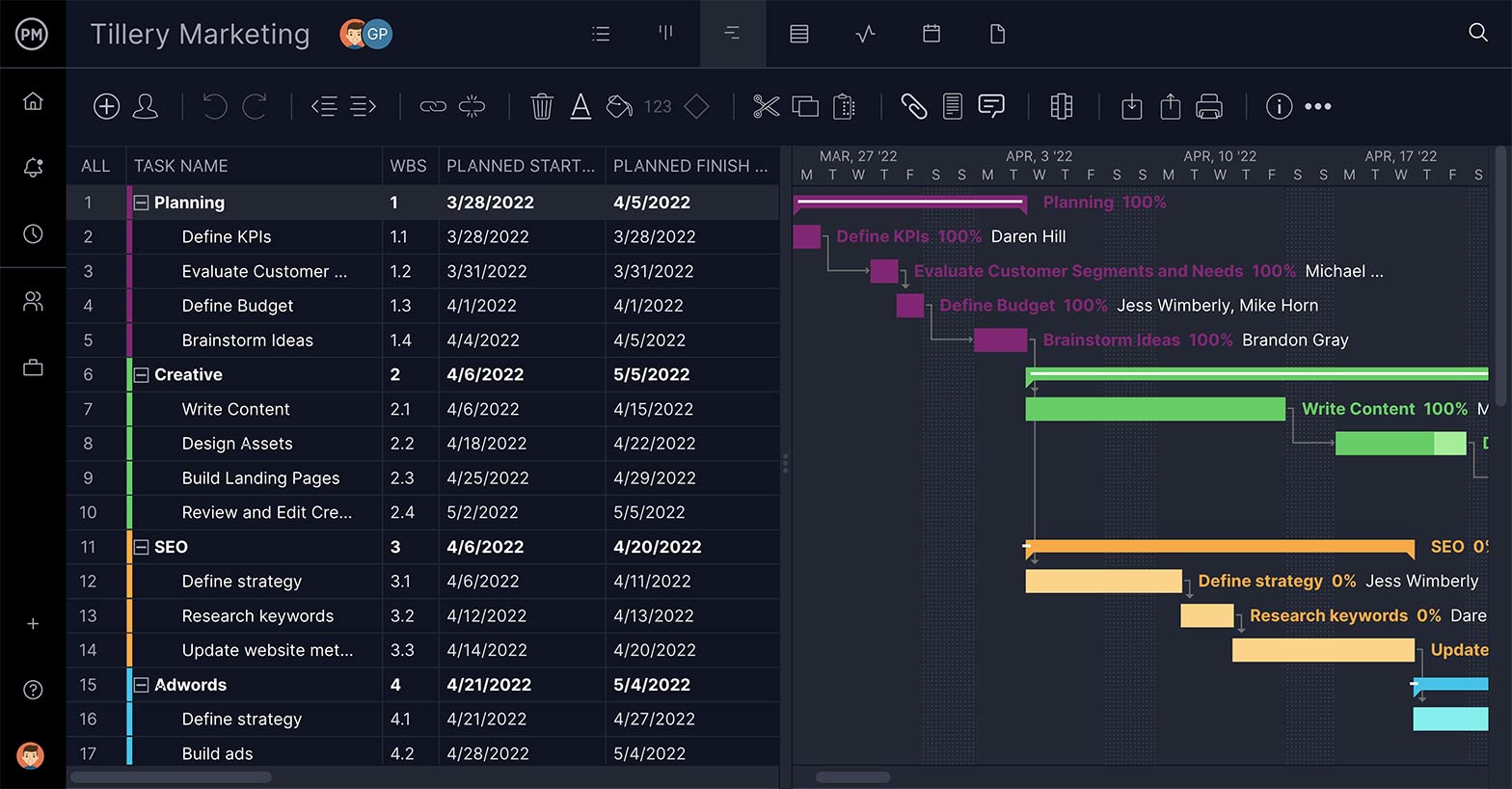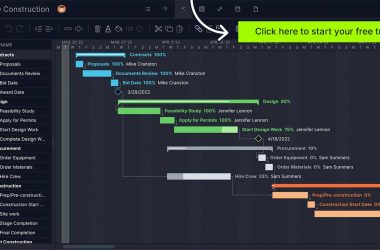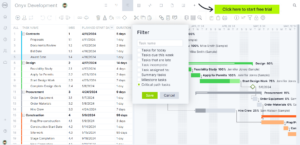Projects are complicated. There are a thousand things that constantly impact the project and require you to reallocate resources to stay on track.
To keep to your schedule and manage costs, you need to gather and process project data throughout the five PMBOK project management groups.
What Are the 5 PMBOK Project Management Process Groups?
To begin, let’s look at the five project management process groups defined in the Project Management Book of Knowledge (PMBOK), published by the Project Management Institute (PMI), the leading industry trade group.
Project managers use the five project management phases to structure projects and lead them from beginning to end. Each of these phases serves a specific purpose, and project managers must control them to ensure that the project stays on track. Project management software helps project managers stay on top of each of these process groups.
The project management process groups are project initiating, project planning, project execution, project monitoring and control and project closing.
To execute these process groups, project management teams take a series of actions. In this blog, we’ll explore the main steps, documentation and key deliverables for each of these process groups.
When executing a project management plan, it helps to have project management software to organize your work. ProjectManager has robust task lists that do more than just collect tasks. The task list view (one of five different project views that lets teams work how they want) can set priority, attach files, add descriptions, be assigned to team members and track status. Try ProjectManager for free today.

1. Initiating Process Group
The PMBOK defines the project initiation phase as “the process of formally recognizing that a new project exists or that an existing project should continue into its next phase.”
In this phase, project managers discuss the business value of the project, as well as if the project is feasible. You also explore the impact on stakeholders. If the project is considered viable and valuable, it is pursued. If it’s not, it’s abandoned. Here’s a quick overview of the main steps that make up the initiating process group.
Write a Business Case
A business case is a document that aims to persuade stakeholders within a company that a project will benefit the organization in the long term. It’s used to justify a project, idea or opportunity.
The business case typically includes a problem or opportunity, the proposed solution, alternatives and costs involved. It will also have a list of project stakeholders as well as the risks and benefits inherent in the project.
Make a Project Charter and Team Charter
A project charter is a document that outlines the purpose, scope, objectives, stakeholders and plan for a project. This will serve as a roadmap for the project, guiding decisions and actions throughout its life cycle.
A team charter outlines the purpose and goals of the team as well as how they will work together on the project. This can also be used as a roadmap for the team and its sponsors to ensure that everyone is clear about the direction they’re heading.
Identify and Analyze Potential Project Risks
To identify project risk, use a risk register. This tool helps project managers to identify, assess and manage risks in a project. It stores information about risks, such as the likelihood of occurrence and how the team will manage them. This is done to better understand risks and their implications to track and mitigate them before they become problems.
Another tool to use is a risk matrix, which is a visual tool to evaluate and prioritize project risk. It is used during the project planning phase to assess the likelihood and severity of the risk if it occurs. It is also used to prioritize risks to know which to address if they do show up in the project.
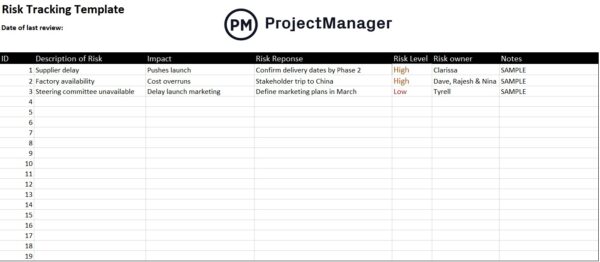
Assess Enterprise Environmental Factors
Enterprise environmental factors (EEFs) are internal and external factors that influence projects and organizations. Internal examples include the company’s infrastructure, skill availability, risk attitude and governance approach. External EETs can be the political or financial climate, government or industry standards and market conditions.
EEFs are important because they are factors not under the control of the project team and can influence constraints or direct the project. To identify what EEFs are affecting the project, use a SWOT analysis, which identifies strengths, weaknesses, opportunities and threats to the project.
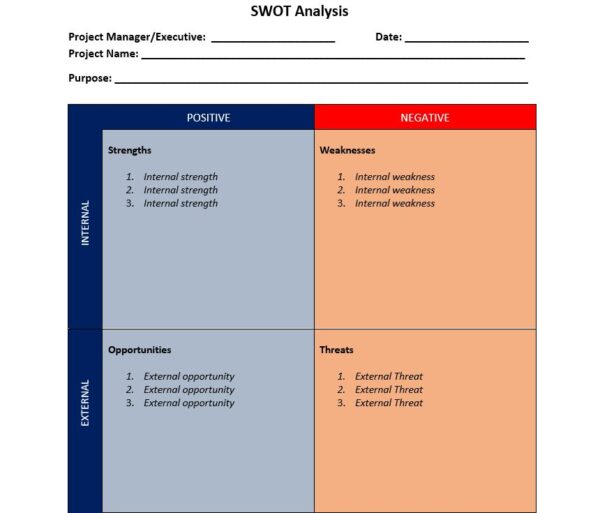
Prepare Organizational Process Assets
Organizational process assets (OAPs) are resources that a company or organization has that can help a project succeed. These can be physical property or knowledge-based. They can be owned or developed by the company.
Some examples of OAPs include policies and procedures, such as plans, guidelines and organizational standard processes. In terms of knowledge, OAPs can be lessons learned from past projects, templates and historical information. Software tools, such as project management software, can also be organization process assets.
During this phase, you must also create a business case that answers those questions. The business case includes the estimated costs and benefits of the project. There is also a feasibility study to see if the project makes sense to the organization and its stakeholders. That’s followed by a project charter, which answers the who, what and where of the project.
There’s more, of course, such as:
- Stakeholder analysis
- Selecting the team
- Defining roles and responsibilities
- Selecting the project office
- Choosing the right tools, equipment and communication infrastructure
Once the project has been signed and is ready to move forward, there is a kickoff meeting. Use a kickoff meeting to get everyone on the project team on the same page so the project can start right.
2. Planning Process Group
Once the project initiation is complete and the project has the green light to go ahead, the project planning phase can begin. The planning process is when stakeholders and the project team learn how to achieve the final deliverable of the project or service.
At this point, you document the project plan, as well as define the project deliverables and requirements. You create a project schedule, designed to manage time, cost, quality, changes, risk and any project-related issues.
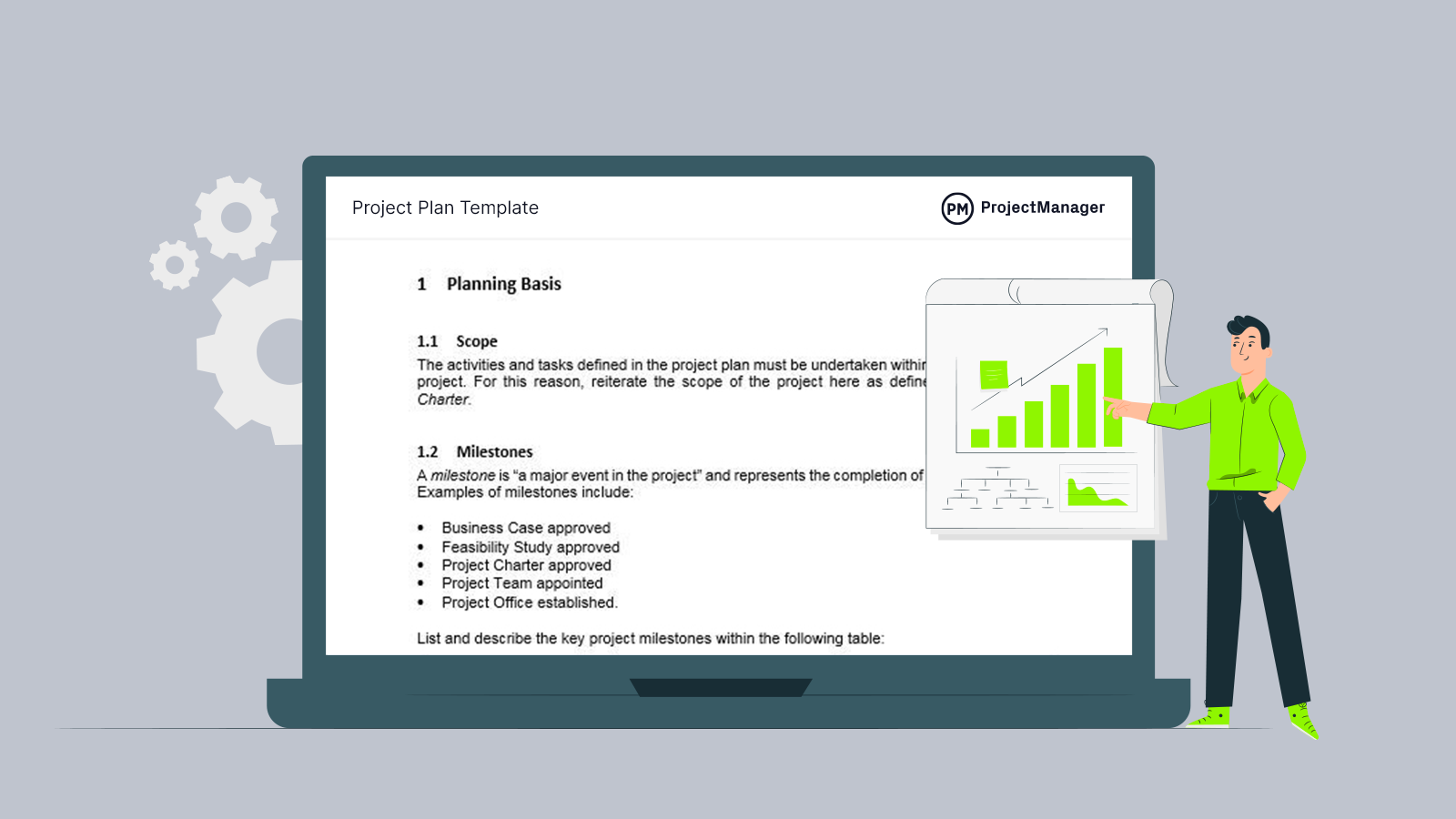
Get your free
Project Plan Template
Use this free Project Plan Template for Word to manage your projects better.
You also take this opportunity to plan resources, such as teams, external suppliers, materials and equipment. You also define roles, responsibilities and where team members sit in the project structure.
There is also the creation of a stakeholder register. This is a crucial document that lists all the key stakeholders and project sponsors in a project. It is part of stakeholder management, and can include how and when you update project stakeholders on the progress of the project.
The project manager is responsible for leading the project planning phase and making accurate estimates on time, budget and resources. It’s at this phase in the project that you plan the scope, use a work breakdown structure (WBS) to organize tasks, make procurement plans and define communication channels and frequency.
Define the Project Scope
Defining the project scope involves determining the total amount of work needed to complete the project. This includes project goals, deliverables, tasks, costs and deadlines as well as defining exclusions, establishing project scope control procedures and documenting all this in a project scope management plan. Once the project scope is defined, set a scope baseline to capture it and compare it to actual scope as the project is executed.
Make a Resource Plan
A resource plan identifies, organizes and lists resources needed to complete the project. It also maps out how and when those resources will be used in the project. This allows resources to be used efficiently and can identify when resources are overallocated or underutilized.
Make a Project Schedule
A project schedule is a planning tool used to organize tasks, resources and timelines to help ensure that a project is completed on time. It includes a timeline, with start and end dates, milestones and a view of the project’s scope. It also has tasks, with estimated duration and resource requirements. Task dependencies, which are work that can’t start or end until another task has started or ended, are identified.
Establish a Project Budget and Cost Management Plan
A project budget is a plan that details how much will be spent for what and by when. A cost management plan is a document that helps to map and control a budget. It enables project managers to estimate their costs, allocate resources to the right areas and control overall spending.
Make a Risk Management Plan
A risk management plan is a document that lists risks and obstacles that could impact a project. It also explains how the project team will track, manage and eliminate those risks to achieve the project’s objectives. The risk management plan should identify the risk, assess it, describe how it will be traded and monitor and report on that process. Roles and responsibilities will be assigned, too.
Make a Stakeholder Management Plan
A stakeholder management plan outlines how to identify, analyze and engage stakeholders in a project. It includes a stakeholder plan to figure out the level of information each needs and the frequency and channel for that communication. To better understand how to manage stakeholders, project managers use a stakeholder register, which lists people, groups or organizations involved in the project and their impact on the project, and a stakeholder map, a visual representation of those stakeholders and better categorize them based on influence and interest in the project.
Establish Project Controls for Monitoring Scope, Costs and Schedule
While project controls are used in the monitoring and control phase of the project, they first have to be planned. At this point, define those tools, techniques and processes that can be used by project managers to measure and control project constraints during the execution phase. These constraints include time, cost, scope, quality, risk and resources.
Create a Change Management Plan
This is when a change management plan is written as a document that outlines the strategy and procedures necessary to deal with new project change. This involves having a clear vision and purpose for the change, assessing the readiness for it, defining roles and responsibilities in the change process as well as having a communication strategy and training and support system.
3. Executing Process Group
At this point, you’re ready to build the product or service that you’ve planned for. This phase, therefore, tends to be the longest of the project. It’s where you devote most of your energy and resources as you keep the project on track against various project constraints.
The execution phase is deeply connected to the next phase of the project, monitoring and controlling. The project manager is tasked with tracking performance and progress to ensure the actual effort is aligned with the planned effort.
Allocate Project Resources
To properly allocate project resources, assess resource needs and prioritize resource requirements. Then strategically allocate resources as needed and monitor and adjust those resources as needed throughout the project.
Balance the Team’s Workload
Once assignments have been made, do a workload analysis to ensure that no one is overloaded with tasks or underutilized. Ideally, a project manager wants to balance the team’s workload so that tasks are evenly distributed across all team members.
4. Monitoring and Controlling Process Group
While executing the project plan, the project manager monitors and controls performance to keep the work going as scheduled and within budget. Project managers continuously measure metrics to make sure they meet their milestones.
Implement Project Control Procedures, Tools and Techniques
Some of the key tasks associated with the project monitoring and controlling phase are:
- Scope verification and change control
- Schedule control
- Cost control
- Quality control
- Performance reporting
- Risk control
- Contract administration
Make Project Status Reports
A project status report provides a snapshot of the project’s progress at a specific point in time. It compares the project’s progress to where it should be at this time, according to the project plan. Use status reports to help stay on schedule.
Use Timesheets to Keep Track of Labor Costs
Timesheets help with payroll but can also be used to manage the project budget by tracking labor costs. As team members log their work hours, project managers get visibility into how much the project is costing in terms of labor rates.
5. Closing Process Group
Handing off the final deliverable on time, within budget and the quality expectations of your stakeholders is important, but it’s not the end of the project. You still need to tie up some loose ends. All activities conclude at this point and the project is closed, which means you need to sign off on documents and fulfill contracts.
Conduct a Post-Mortem or Post-Implementation Review
A post-mortem of the project is recommended. During a post-mortem, the project manager and team go over what worked and what didn’t to learn how they can improve processes in the next project. They do this by listing best practices and the lessons they’ve learned.
Then, you can release your team and celebrate the success of the project. The last part might not seem crucial, but it is! Keeping team morale high by validating their hard work will positively impact future projects.
Write a Lessons Learned Document
This is done after the completion of a project. The project team and project managers and sometimes stakeholders as well, openly discuss what went well and what didn’t over the life cycle of the project. This can help support good processes in the future as well as avoid making the same mistakes.
Project Management Plan Template
The project management plan is a document that describes all the different activities that will take place during the execution, monitoring and closing phases of a project. It’s the most important project management document you can create as a project manager, which is why we’ve created a free project plan template for Word to help you get started.
Difference Between PMBOK Project Management Process Groups and Knowledge Areas
We’ve detailed the five process groups in project management, all of which are subject to the controlling process in project management. To manage those project management process groups, you need to utilize the knowledge areas of project management.
The Ten Project Management Knowledge Areas
There are 10 project management knowledge areas. They are:
- Project integration management
- Project scope management
- Project time management
- Project cost management
- Project quality management
- Project resource management
- Project communications management
- Project risk management
- Project procurement management
- Project stakeholder management
Project management knowledge areas are not the same as the project management process groups. The major difference is that the process groups outline what a project manager needs to do, while the knowledge areas are what a project manager needs to know.
More specifically, the knowledge areas are used throughout the project management process groups. The knowledge areas are made up of processes. They have inputs, tools, techniques and outputs. They are project management functions that help deliver successful projects.
When Do You Use Project Management Knowledge Areas?
The knowledge areas work within all of the project management process groups. The process groups are where you break up and categorize a project. It’s the sequence of the project from start to finish. You can use the knowledge areas throughout each stage of the process.
A good way to understand the difference is that knowledge areas categorize processes, while project management process groups are stages or phases of the project. The knowledge areas don’t have a logical relationship, but the project management process groups lead from one to the next.
Both project management process groups and knowledge areas work better together when they’re powered by project management software. Project management software will help you control the process groups and lead you to a successful project.
How ProjectManager Helps With PMBOK Process Groups
ProjectManager is online software that gives project managers more insightful data to make better decisions while equipping hybrid teams with multiple project views to get work done how they would prefer. Some features help throughout each process phase. From unlimited file storage for a central hub of documentation when initiating to reviewing what worked and didn’t during close.
Get Started on the Right Foot in the Planning Process Group
Planning is one of the more complex process groups. You need a tool that can organize your tasks, link dependencies and set milestones. ProjectManager’s Gantt chart project view does that and more. You can filter for the critical path instead of having to make time-consuming calculations. Then, set a baseline and track planned versus actual effort.
Nail Your Execution Phase with Different Project Views
ProjectManager has multiple project views. Managers can use the Gantt or Sheet view, while teams can manage their workload on kanban boards, task lists and calendars. This connects hybrid teams, no matter where they are. The kanban board visualizes workflow during the execution phase, letting team members manage their backlog and plan sprints. Meanwhile, managers get the transparency needed to accurately allocate resources and keep teams working at capacity.
Track Progress in the Monitoring and Controlling Process Group
During the monitoring and controlling process group, real-time data comes in handy. Data gives managers a window into the progress and performance of the project. ProjectManager’s live dashboards calculate metrics such as project variance, costs and more for an instant status report without having to take time to configure the tool, as with other tools.
ProjectManager is award-winning software with features to organize, monitor and report on your project. One-click reporting features filter detailed data and can be easily shared with stakeholders, and resource management software makes sure everyone has what they need when they need it to complete their work. Try ProjectManager today for free!
The post Project Management Process Groups: A Quick Guide appeared first on ProjectManager.


